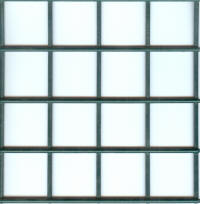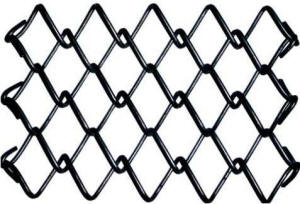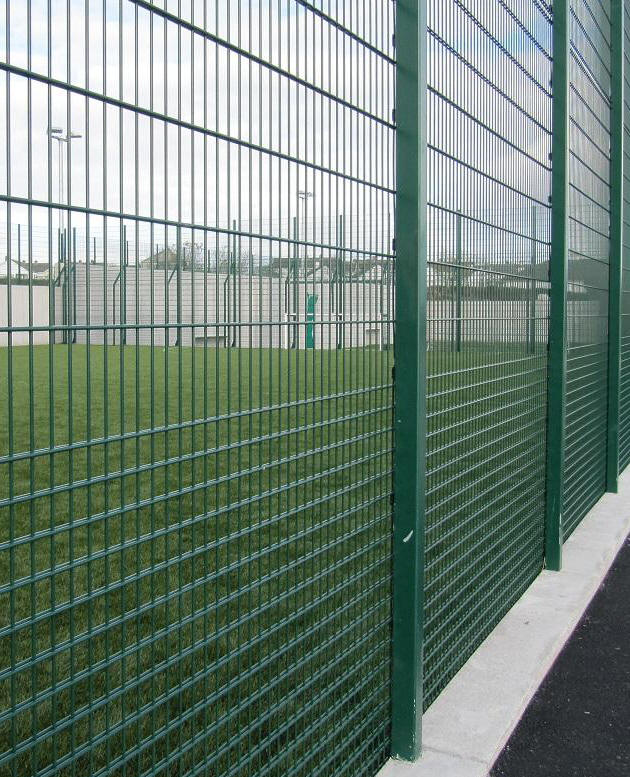Gardeners
| RSPB Spotlight on Badgers book |
 |
James
Lowen explores the lives of badgers and their communal
living, feeding habits and threats to their conservation. Click
here to buy:
Paperback edition
Kindle edition
|
|
"The world of badgers is in some ways analogous with the
human world. Like us, their behaviour is greatly influenced by their need for
homes and living space, and being social like we are, they too have their
problems of learning how to live together ..... and with us" |
|
Ernest Neal
|
The following advice is fairly general - you would probably be better
to speak to your local Badger
Group for specific advice about your particular situation.
What are badgers doing and Why are they doing it?
The key thing to find out is why badgers are coming into your garden.
It is often because:
- They are using it as toilet
- They are marking their territory
- They are feeding
The next thing is to walk round the perimeter of your garden to see
where they are getting in and how this can be stopped.
Toilet
When badgers emerge in the evening, they will often head off to find
a toilet to defecate. They will normally dig a series of holes in the
ground (a few 10s of metres from their home) and leave their poo in
those holes. The poo will normally be dark and muddy - sometimes a bit
sloppy and sometimes with fruit stones and insects casings in it. It can
sometimes look a bit like sloppy chocolate toothpaste; and may have a
musky smell (from 3 to 4 feet away).
The way to stop badgers is to try to keep them out of the garden (by
using fencing, for example); and to dig up and remove the offending poo
and surrounding soil every time it reappears. Some people spray the new
ground with strong smelling natural substances (such as Citronella) to
try and mask the residual smell of badger poo, urine and musk.
Suitable fencing is another option, that we will come to that later
on.
Territorial Marking
Badgers live in family groups (clans) are "own" a territory. If
badgers from another territory encroach, there is a risk that badgers
will fight to defend their land (or their females). The borders of
adjoining territories may be "marked" by badgers of each clan - this
warns the other badgers not to proceed any further (unless they want a
fight).
This marking may consist of things you can not see (urine and badger
musk), as well as badger poo, which may be left on badger paths close to
the boundary. You may be fortunate to identify one lot of badger poo
near a physical boundary (such as a garden wall or fence) with some more
poo on the other side. It may well be that the barrier defines the
boundary of two badger territories.
The easiest way to deal with this is to ignore it. Do you really need
to USE every bit of land right up to the barrier?
Otherwise, you can disguise it - for example by planting some
fast-growing low shrubs; so the badgers simple "go" behind the shrubs
out of sight.
Otherwise, digging up the offending material is worth a try; as is
using Citronella on the offending ground. However, the badgers may be
marking in that precise spot to "match" neighbouring badgers; so you may
be better to treat both side of the barrier in the same way.
Suitable fencing is another option, that we will come to that later
on.
Badgers Feeding
It is normal for badgers to have a large territory, that they patrol
every night. Unless you have an unusually good food source for badgers,
it is likely they WILL be feeding in several other areas on their
nightly patrols. It may be that your garden simply gives better feeding
opportunities than your neighbours gardens. Or, it could be that they
come into your garden to snack on their way to or from a neighbour who
provides them with food. The best method is usually to try a holistic
approach; to work out what lands the badgers are accessing; to see if
they can be distracted into certain safe areas or fenced out of other
areas. It is better to do this as a community; rather than a single
house with no knowledge of local badgers or their habits.
Of course, badgers main food
source is earth-worms, and they can cause some problems digging up lawns
as they try to get the worms. Evidence of this is usually provided in
the form of round or elliptical snuffle-holes, where the badger has pushed it's snout down
into the ground so it can pull up the juicy worm (without the worm
snapping in two).
As well as worms, badgers will also eat a variety of insects - many
of which are deemed to be pests by gardeners. Eating these insects pests
may provide gardeners with a real benefit (fewer wasps, grubs and slugs,
for example), but badgers can sometimes cause damage getting to some of
these pests. It can be annoying to see lawns dug up by badgers, as they
forage after pests which live in the roots of the turf. These insect
larva often go unnoticed by gardeners when they exists in low numbers.
As the numbers of lawn pests increase this can have the double
disadvantage of causing damage to the roots of the lawn (weakening the
structure of the lawn turf); and being an enhanced food resource for the
badgers. The hungry badgers are then attracted to the pests, which they
find easy to get hold of because the pests have weakened the lawn. The
solution here is to try to improve the quality of the lawn non-bone-meal
fertiliser, raking out moss and repairing damaged sections. It is worth
thinking about using eco-friendly non-poisonous ways to reduce the
insect load in the lawn too.
In dry summers, the amount of digging done by badgers may increase if
they really need to eat wet food (like earthworms), Putting out fresh
clean Water (not Milk)
can help the badgers feel less de-hydrated, which can mean they cause
less garden damage in the hot summer months.
As well as worms, badgers can also eat garden pests - including
leather jackets, slugs, snails, wasps nests, various grubs etc.
Food Crops
If you grow "food" in your garden, badgers will be attracted to it
too. Moist fruit is good for badgers in hot weather; and almost any food
is good in the autumn, when they need to pile on weight to see them
through the winter. As well as the food you grow for your own human
needs (strawberries, blackberries, plums, apples, grapes, sweetcorn,
various vegetables, etc); badgers will also eat other wild fruits and
berries that you would not eat. They will eat various grains and even
yew berries (poisonous to humans), for example.
Windfall fruit is another seasonal risk with badgers. They will be
able to smell the ripening fruit from a long way off; and they will know
that a lot of fruit will end up on the ground. It is a surprise to many
people how much fruit a badger can eat in the autumn. That said, if they
are eating windfall fruit, this may give them enough food to act as
so-called distraction-feeding. This means they eat a decent meal and
leave, before they have the incentive to go digging up lawns and
damaging flower/vegetable beds looking for other food.
Flower Bulbs
Badgers also love to eat some bulbs, roots and tubers - if determined
they may well end up ripping up whole areas of flower bulbs too.
Chemical Warfare
There is no chemical which can be legally used as a badger deterrent;
so using ANY chemical means you are at some risk of committing an
offence under the pesticide regulations or under wildlife protection
laws. However, some people have tried using so-called taste deterrents
to deter birds and animals from feeding on certain crops at key times.
If these are used on flower bulbs, they may deter them from being eaten;
and, as they are not human food crops, there is little risk to humans.
Some people have claimed success by treating cloth strips with
Citronella, Olbas Oil and Ralgex and hanging those strips around the
perimeter of problem areas. The idea being that the pungent smell deters
the sensitive nose of many nocturnal animals. You need to refresh the
scent periodically and after heavy rain; and it is worth experimenting
with different scents if one doesn't seem to work or if the animals you
are trying to deter get used to it.
Electronic Gadgets
A variety of companies sell these ultrasonic alarms, which sound a
high-pitched sound when they are triggered by the movement of an animal.
They are said to work on animals which can hear high-pitch sounds; but
they can not be heard by humans. As a new object which appears in a
garden, they may appear to work against badgers for a while, but badgers
often seem to get used to them, or put up with the annoyance of they are
hungry enough.
That said, some key wildlife organisations have endorsed their
usefulness to deter animals such as cats; so they may have a use in
certain situations. We remain unconvinced as to their effectiveness to
deter badgers.
Badgers Feeding from Your Bird Tables and Bins
Badgers will try and eat most things they find. Peanuts are a real
delicacy for badgers; and they will be attracted to gardens with bird
feeders; as nuts will always fall on to the ground. Badgers may even be
able to reach up to bird nuts, fat balls and bird baths.
Accordingly, if you feed the birds, a side effect may be encouraging
other wildlife too (badgers, foxes and squirrels). Cutting down on the
quantity of nuts on the ground may help deter badgers.
Keeping bins securely closed with locks or extra-strong bungee cords
will tend to deter badgers from getting in to eat food waste. Be aware
that badgers can easily overturn normal waste bins, so the lid needs to
stay secure, even if the bin gets toppled over.
Wheelie bins are normally better at keeping badgers out as they are
taller; but a determined badger may be able to pull a wheelie bin over
if it can climb up onto the top.
Grassland
If you cut your lawns short, this simply means that badgers find
it easier to locate the worms on the surface. Leaving the grass to grow
longer (i.e. several inches), may mean worms are more difficult to find, so badgers don't end
up doing as much damage (though your garden may look less formal than it
did before).
Toleration
Tolerating badgers
visiting your garden is an option for some gardeners - especially if you
can get used to not minding when they dig up your lawns to get at
the worms! After all, the badger doesn't know your garden it meant to be
neat and tidy - it just sees it any another extension of its habitat.
Change things around
Other options include the use of things to "spook" the
badgers away.
Being very cautious animals, badgers can be deterred by
unusual things or changes to their surroundings. A sudden change (like a
security light or a house light coming on) can spook some badgers. A
door or a window being opened or closed can do the trick too.
The sight of an obvious human or dog-like shape may help - so a
scarecrow with a noisy flapping nylon cape may help deter badgers -
especially if you can move it around or swap it with other scarecrows on
nearby allotments.
The smell of a human or a dog may put a badger off too - so shuffling
your feet (or the dogs feet) around the badger access points in a garden
may put of a badger for a few hours.
Other unusual sounds (like wind-charms or noisy-plastic toy windmills
or a bunch of old shiny CDs hung up to make a clattering noise) can help
for a while too. Other people have tried using highly-reflective
aluminized plastic strips on posts; as they flap about in the breeze and
create strange reflections patterns from security lights, which may
spook badgers for a little while.
A badger which gets take fright will typically stay away for half an
hour or more; so having a variety of deterrents may help, if it gets
used to one thing not being scary any more.
However, badgers can overcome some of their fears - especially if the
food is good enough. Accordingly, make sure dustbin lids are very securely
fastened; and smelly food scraps bagged up deep inside the bin. A badger
has a sense of smell hundreds of times better than a human; and last
nights curry remnants will smell fantastic to a badger, even if they are
inside a plastic bin.
Remember
too that a badger will be able to overturn a bin if it can get a paw or its
nose underneath it!
Making things tricky for badgers
Be aware that badgers are creatures of habit and can be very
determined to keep to those habits. The longer a badger has been
following a habit; the more difficult it will be to get it to stop. The
choice you have to make is how much effort you want to put in to exclude
badgers.
Using temporary sticks or picket-type fencing to protect key plants
or small areas of important crops is worth a try at first. Gardeners
will be familiar with plastic tubes used around young saplings to
protect them from being eaten by rabbits. Creating a series of fences
using temporary wooden barriers is worth a try until you can find a
better long-term solution.
Remember that badgers have claws on their front feet and their back
feet. Front claws up to 25mm long mean that can use their immense
strength to get through weak points in fences, plastic sheeting and
rotten wood if they want to. You are better to use too much protection
rather than too little when it comes to badgers.
Protecting Raised Beds, Decking and Sheds from Digging
 If badgers are digging up bulbs frequently or getting into
raised beds or large
urns, some people have suggested using a thick wire grid (weldmesh) to prevent
digging. If badgers are digging up bulbs frequently or getting into
raised beds or large
urns, some people have suggested using a thick wire grid (weldmesh) to prevent
digging.
Here you get a sheet of weldmesh and cut it to size to fit into the
raised bed; and fit it just beneath the soil surface.
Now the vegetation will grow through the grid, but the
badgers can not dig through it. This does allow you to grow flowers and
crops such as potatoes; as the stiff weldmesh can be removed at harvest
time.
The same method can be adapted to keep larger animals out if you have
a gap under sheds and decking.
Almost goes without saying that this is a potentially costly solution
which is normally used for small
areas only.
Large Lawn Areas
 For
larger areas, you can prevent badgers digging deep holes by covering the
area with tennis-court-type wire netting which is fixed a couple of
inches below the lawn surface. For
larger areas, you can prevent badgers digging deep holes by covering the
area with tennis-court-type wire netting which is fixed a couple of
inches below the lawn surface.
Again the lawn grows through the mesh very well and this is very
useful to stop badgers digging under sheds, foundations and buildings.
It is a solution used by
Badger Consultants who need to protect railway embankments and flood
defences against burrowing by badgers, foxes and rabbits.
Again, this is not cheap, but it is a highly effective method to
protect areas of vital importance.
Fencing
You can protect gardens with tall secure fencing, or by arranging an "assault
course" of sticks to deter badgers from making the trip to key
sections you want to protect.
 The
first thing to do is a detailed walk around your garden to see where the
badger might be getting in. Holes in hedgerows, fences and walls are
commonly used by badgers. Even small holes can be expanded by badgers
with an hour or so of effort. The
first thing to do is a detailed walk around your garden to see where the
badger might be getting in. Holes in hedgerows, fences and walls are
commonly used by badgers. Even small holes can be expanded by badgers
with an hour or so of effort.
Plugging holes is the best place to start. If they are digging under
fences, try setting a concrete paving slab in a trench under the fence
to stop them digging under at that point.
Otherwise, having established that it is safe to do so (i.e. no gas
or water pipes, drains or cables), drive some long stout sticks
vertically into the ground to block any tunnelling attempts at weak
points along the boundary. Start with 3cm diameter wooden poles or 4mm
diameter metal rods, set a few cm apart.
If you can't dig into the ground, securing tennis-court-type wire
netting on the ground (and to the fence) may be enough to prevent
badgers getting through holes in fences.
You can also protect your best garden areas with unclimbable walls
and/or very stout fences and wiring.
A badger can climb roughly-built
walls, so make sure it can not gain any footholds or claw holds to get
over the top. A badger can also climb a wire fence in a somewhat
ungainly fashion, so you will need to make sure it is pretty tall (i.e.
at least one metre) and has no obvious holds; or ways around, through or
under.
The really tricky solutions are where you have gardens which are open
plan, with no barriers between neighbours. In these circumstances, the
best way forward is to club together as a community and get a recognised
badger expert to visit and survey the area so they can advise what can
be done. The people to contact here are:
- Your local Badger
Group.
- Or, in the case of extensive damage or commercial interests, a
Badger Consultant.
- The other fencing option is to use an
Electric Fence of a type
specifically designed and installed to deter badgers. Most
gardeners do not even want to entertain the idea of an electric
fence, but they are very effective. Please see the
Fencing page for more
details.
Protection and Licensing
Badgers remain a protected species, and you can not do anything to
cause them actual harm (even if they do wreck your nice garden).
If badgers cause a serious problem, it is sometimes possible to get
the badgers moved to another area. However, this requires a licence from
the authorities, and good proof of subsidence or serious economic harm.
Wrecking a garden is probably not counted as serious harm - unless you
are running a commercial garden or the badgers digging is causing
subsidence or other structural damage.
If you have a serious problem and you are willing to spend the money
on exploring whether badgers could be moved, you need to speak to your
local Badger Group or
a Badger Consultant; with
your chequebook at the ready.

Renardine
Remember that badger deterrence can no longer be done with the chemical
repellent called Renardine. See also our Chemical Deterrence
page.
| Legal Notice regarding the banning of
Renardine: |
| Renardine was the only legally permitted chemical deterrent which was
effective against badgers.
As from the 24th March 2005, Renardine has been banned.
Importantly, ALL the approvals for Renardine have now expired. This
means that: |
|
* Renardine can no longer be advertised for sale. |
|
* Renardine can not be bought from any shop, wholesaler, mail order,
agricultural supplies merchants, internet or by private sale. |
|
* Renardine may no longer be supplied, sold, given away or swapped. |
|
* Renardine may no longer by used. |
|
* Renardine may no longer be stored (so any stocks you have must be
disposed of). |
|
RenCoco
( Renardine-impregnated cocoa shells) has also been banned. |
|
For more information see the
PSD's web site at http://www.pesticides.gov.uk/approvals.asp?id=1567 |
|
